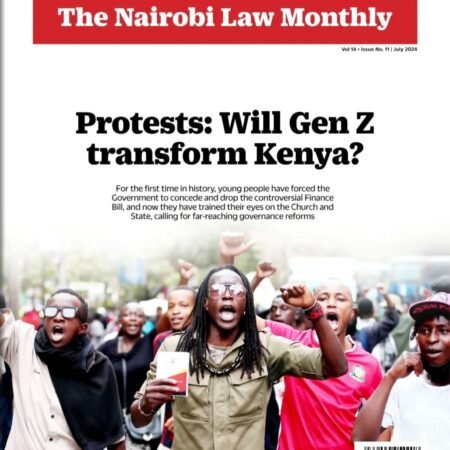By Cobus Van Staden
The last quarter of 2019 saw the launch of the newest phase of Kenya’s Standard Gauge Railway (SGR,) connecting the port in Mombasa to the Rift Valley town of Naivasha. The Mombasa-Naivasha section of the SGR cost $1.5 billion. It connects to the initial phase, between Nairobi and Mombasa, which cost $3.2 billion. Both phases were funded by China and built by Chinese construction companies. More than an infrastructure project, the SGR has become symbolic of both the promise and the pitfalls of the China-Africa relationship.
-
Sale!
Download Nairobi Law Monthly Magazine July 2024 Edition
Downloads Original price was: KShs200.00.KShs100.00Current price is: KShs100.00.
Or, more accurately, it has been caught up in competing discourses on China’s impact on the continent. On the one hand, it is praised for furthering Africa’s goals of regionally integrated infrastructure, increasing the competitiveness of Kenyan exports and providing a more sustainable alternative to road travel. However, as concerns about African debt grow, so have perceptions of the SGR as a project bloated by corruption and opaque decision-making. This perception was boosted by crackdowns on officials in corruption investigations last year. When China subsequently refused to fund the third phase of the railway project, pending the results of an enhanced set of feasibility studies, it was taken as a tacit admission of wariness in Beijing, despite its status as a prominent Belt and Road project.
At the heart of the issue is debt. The Kenyan parliament last week approved the raising of the country’s debt ceiling, shifting from calculating the debt ceiling as a percentage of GDP to an absolute figure of $86 billion, opening the door to a jump in lending. The Kenyan government has submitted 44 new loans, totalling $4.1 billion, to the parliament for approval. If approved, they will fund a host of projects concentrating on food security, housing, healthcare, and manufacturing.
Much of the criticism of the SGR took place amid allegations that China conducts so-called debt-trap diplomacy, purposefully entangling poor countries in loans to seize state assets. While the debt trap narrative has largely been refuted, China’s proportion of the proposed new debt remains sizable – $837 million is supposed to come from China, making it the second-largest among the proposed lenders. China already holds the highest proportion of Kenya’s bilateral debt, with 87 percent of all payments to service bilateral debt going to China in 2019. This makes it easy to cite Kenya as an example of China gaining leverage over Africa via lending.

However, unpacking the proposed loans complicates the story. $1.4 billion will come from two multilateral lenders, the African Development Bank, and the World Bank. The roster is also studded with traditional lenders, further swelling Kenya’s bilateral debt. These include Japan ($799 million), the French Development Agency ($295 million) and Germany ($147 million).
It seems that the China debt problem is only one part of a larger Kenya debt problem. The World Bank raised the concern that hiking the debt ceiling will push Kenya closer to debt distress. Nairobi insists that the debt is sustainable. Yet, how it will ensure that the loans will actually spur development, and what the impact of the debt repayments will be on that very development, remain open questions.
Based on the experience of the SGR, it is safe to guess that these won’t be simple problems to solve. For example, while the passenger side of the SGR has been a great success, the project’s economic impact depends on successfully moving the vast majority of freight transport from trucks to trains. To achieve this, the government had to take on the powerful trucking lobby, employing questionable legal mechanisms and creating significant political pushback in the process.
The SGR can certainly be read as a story about Chinese debt. However, it also works as a story about the difficulties of infrastructure-led growth, and how even the sexiest development plans inevitably face problems on the ground. Take the Mombasa-Naivasha section. It is supposed to be linked to a new industrial park, where investors will create jobs fuelled by tax breaks and sustainable electricity from nearby geothermal fields. What could be better? However, the launch of the industrial park has been delayed, and the longer it stays offline, the easier it becomes to dismiss the Mombasa-Naivasha line as yet another overpriced boondoggle ceding Kenya’s future wealth to Beijing.
In development, as in many other fields, the narrative is king. In pretentious academic terms, the SGR is a train, but it’s also a site of narrative contestation. In other words, several narratives about Kenya, Africa, debt, China, and development are at war, and the SGR (and Kenya’s debt in general) reveals this conflict in action. How it comes out will shape the stories we tell ourselves in order to understand the world – stories about Africa rising, about the Belt and Road, about debt traps and development and who gets to call themselves a superpower. (
— Author is senior China-Africa researcher at South African Institute of International Affairs. This article first ran on The China Africa Project

